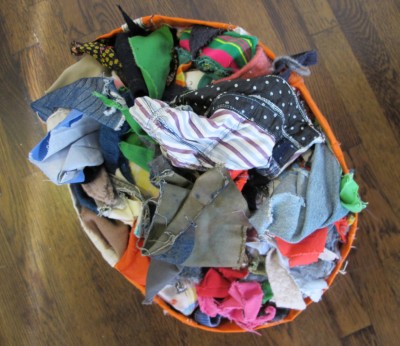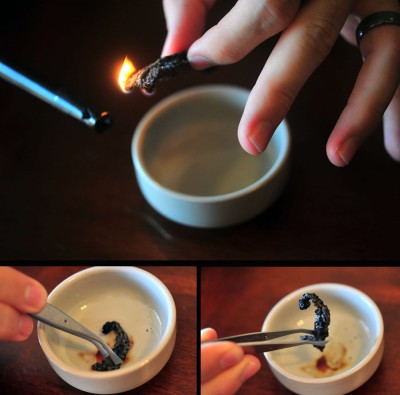If you’re thrifty, you likely have stockpiles of salvaged materials of all types in storage. Among these, balls of string or yarn and bags of rags likely await future use around your homestead.
You know what some of these materials are: yarn from a wool sweater, cotton denim from worn-out jeans, linen cut from a stained tablecloth. The composition of other fabric and fiber you’ve stored, however, might be a mystery, and it will languish unused because you don’t know enough about it. It’s difficult to know if you have the right application for a material you can’t identify.
Our forebears had it easier; there were fewer fabric types around the house, making them more readily identifiable by touch and sight. Cottons have always been a standard, as have woolens and more precious fabrics like linen and silk. Most of us can tell these four basics apart.
But introduce rayon, acrylic, polyester and other natural and synthetic fibers, and you’re going to need a more scientific test to figure out what you are dealing with. In this test, you are going to set your fabric on fire! Not to worry, however. You only need to burn a little of it to find out what it is. When performed safely, this fun test is a fail-safe way to help you make use of all kinds of mystery materials.
How to Perform the Test
Begin with assembling your tools. The primary one is a lighter, but you also could use metal tweezers, a small metal tin or tray, a small bucket or bowl of water, scissors, and, of course, fabric or fiber to be tested. Insulating gloves are nice but not strictly necessary. Work outside or in a well-ventilated area, where fabric cannot easily ignite anything nearby. Exercise caution! Some fabrics are extremely combustible and should be handled as such. Before you test your mystery fabric, you may want to test some known fabric. This will give you a better sense of which details you need to be looking out for during the test.
Discover How To Make Just About Anything … From Scratch! [2]
You will cut a small swatch of fabric, about one to two inches square. Hold the fabric above the metal tin with the tweezers and set it on fire with the lighter. Let it catch, and then blow it out. Pay attention to the smell of the burning, the color of the ash, the pattern of the burned area, and the color of the smoke. Take notes on all of these. If you have many mystery materials to test, attach a sample to your notes before continuing, in order to remember which material matches which test results.
Understanding your Results
Different materials burn in predictable ways. Fabrics and yarns can be divided into three main groups, readily identifiable by their burn test.
Cellulose Fibers
These materials are spun from plant fibers. Examples of cellulose fibers are cotton, linen, rayon, hemp, tencel and bamboo. Fabrics made with cellulose fibers are often used in clothing and household linens, as they are soft, absorbent and easy to care for.
Protein Fibers
These fabrics are made of fibers derived from animal wools or other animal sources, such as wool, mohair, alpaca and silk.
Learn More Than 1,000 Secrets For A Healthier, Safer Off-Grid Life! [4]
Most of these fabrics are highly insulating, making them suitable for clothing, blankets and rugs.
Synthetic Materials
Synthetic fabrics are man-made using polymers. Examples of synthetic include acrylic, polyester and nylon. Synthetic fabrics are useful in a wide variety of indoor and outdoor applications and may be made to mimic wool or cotton; however, they are less insulating or absorbent than their natural counterparts.
| Fiber Group | Description of Burn Test |
| Cellulose Fibers | Burns quickly, glowing after the flame is out. Smoke smells of burned paper, and is white or light in color. Ash is white or gray and powdery. |
| Protein Fibers | A slow, sometimes crackling burn, which curls from the flame. Smells of burned hair and does not stay lit. Leaves a bead of ash or a little dark powder. |
| Synthetics | Melts away from the flame or burns very quickly, burning after the flame is removed. When flame is extinguished, a hard plastic edge is left. Often produces a chemical smell and black smoke. |
Once you have determined to what fiber group your mystery fabric belongs, you can continue comparing it to known samples to discover an exact type, or you can safely use it for an appropriate application. Knowing what you have on hand is an important step in maximizing your resources around the homestead, as you don’t want to waste labor on projects with inadequate materials. With the burn test at your disposal to help you identify soft materials, you will be much more able to make educated choices from your scrap heap.
Have you ever performed the burn test? Do you have any advice? Share it in the section below:


